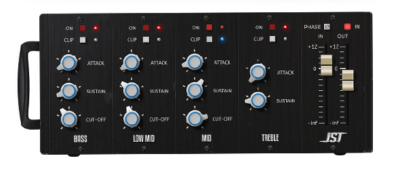New Software Review: Transify by Joey Sturgis Tones
In recent years, a few companies have been filling a hole in the plugin world. In case you didn’t notice, compressors, multi-band compressors, limiters, expanders, and gates were not enough for your drum instruments or groups. The latest big ”thing” for drums is transient-shaping plugins.
Transify by Joey Sturgis Tones is a new addition to the growing ranks of transient plugins, but it presents a twist to the current theme: Transify is a multi-band transient shaper (which brings the total count currently on the market up to a whopping two).
Features
Transify does a great job of shaping your sounds. The Attack knobs increase punchiness nicely, and the Sustain knobs can helpfully suck the reverb or decay out of a drum loop.
There are Cut-off frequency knobs for all four bands (except for the highest) and clip protection can be enabled for each band.
Each band can be enabled/disabled individually, and rounding out the list of features is the addition of an overall polarity switch, along with gain faders for the input/output.
In Use
I wanted to see what Transify would do to a variety of sounds, so I made some drum loops, synth lines, and bass loops for all of us to listen to. I then proceeded to put the plugin through the paces, twisting knobs, overdriving it, underdriving it, and trying all the things I thought I might actually get up to in the studio.
You can check out all the audio examples below, but here’s the lowdown first:
I feel Transify would be a welcome addition to any producer’s studio. It’s inexpensive, does its job well, and can be used to create some really interesting effects. Using Transify as an effect is the most interesting for me, because there are already plenty of ways to get drums to be punchy.
By assigning the knobs on Ableton’s Push to the most useful controls (Attack and Sustain for each of the bands), I was able to mangle the audio quickly and easily as it played. By recording this in real-time to another audio track, I captured some cool loop augmentations, and also set up some nice transitional material.
Transify can be quite aggressive. By twisting the Attack knobs past the 50% mark, you can push the audio to the point where it is no longer usable in the normal realm. This is not a bad thing by any means. To me, it is usually better to have too much room to play in than not enough. But you do have to be careful, especially when applying the effect to drums, as you can quickly push things too far and into the world of obnoxious.
The Sustain knobs are a bit more tame. Moving them all the way to the left or right never really makes things too crazy. On material with a lot of harmonic content, interesting frequencies can be revealed or squashed as you see fit. The Sustain knobs are great for removing reverb from loops and instruments, or for pushing that same reverb up to the front more.
To Be Critical
When using a new plugin, it’s usually nice for me to get an idea of what the creators had in mind through playing around with presets. Whenever I install a new toy, I always like to click through the presets and see what kind of sounds the plugin is capable of. Unfortunately, Transify doesn’t include any presets, so you have to grab knobs and try it for yourself. While this isn’t exactly a worst-case scenario, it would be nice to have some kind of guidance in this regard.
Speaking of guidance, the manual leaves a lot to be desired. Not that there’s really much need for a full-blown manual, but, how Transify handles the different frequencies is never really explained at all. There’s a lot of guesswork going on as to how the different bands are being affected. It seems as if Joey Sturgis Tones is assuming a certain level of understanding on the part of the customers about how multi-band devices work, but that isn’t always the case. A few words on how the plugin works in this regard would be a good addition here.
Another small complaint is the labeling (or perhaps it’s the programmed settings) of the Cut-off frequency knobs. They all seem a bit wide. For example, the Bass knob has a range from 50Hz to 1kHz. That’s some wide bass!
The Low Mid stretches from 1kHz to 4kHz, which seems to extend way beyond “low,” and the Mid goes all the way up to 22kHz. It seems like the names here are just arbitrary and don’t have much to do with actual frequency ranges, so keep that in mind as you’re experimenting.
Summing it Up
I enjoy using Transify and found that it does the job, plus some. Transify exceeds in shaping the attack and sustain of audio, and you can get instantly creative with it. There is, however, some strange labeling of frequencies, presets would be nice, and it has a bare-bones manual.
At $65, I think JST has priced it well: Transify won’t break your bank, and it ticks all the boxes (sounds good, easy to use, does what it says). Is it a must have plugin? Maybe not. But at its price point, it’s definitely a “must-consider” plugin.

Please note: When you buy products through links on this page, we may earn an affiliate commission.







